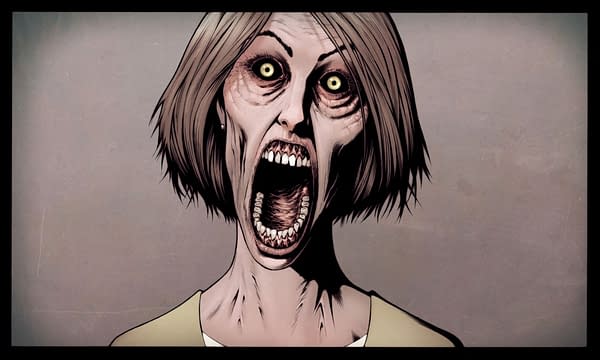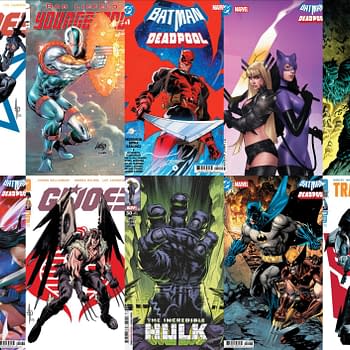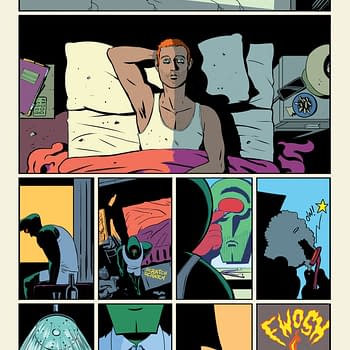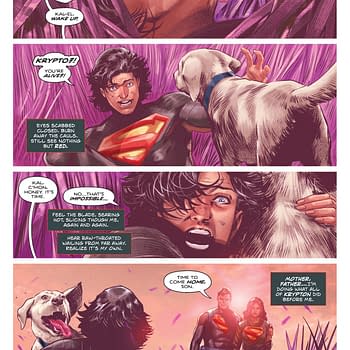Posted in: Comics, Digital, Recent Updates | Tagged: Comics, digital comics, james tynion iv, mark waid, the eighth seal, thrillbent
James Tynion IV On Taking Horror To Thrillbent
Dylan Sutcliff writes;
When Thrillbent was announced I visited the site, read a few comics for free on my laptop and was largely unimpressed. The experience was disappointingly foreign and unengaging and left me thinking free was the appropriate price.
Last weekend at C2E2's Digital First Comics panel, Mark Waid, James Tynion IV, John D. Roberts, Peter Krause and Troy Peteri discussed the aspects of digital comics that distinguish them from print. One thing unanimously agreed upon was the iPad and other tablets' superiority for reading digital comics, a conclusion I also came to after purchasing Tynion's The Eighth Seal on Comixology. Although the first issue is relatively short, the method of storytelling is far from that of a traditional print comic or any other digital comic I had read. Quite unlike the material I read on Thrillbent's website, the tablet injects life into the story and establishes an intimate experience with the reader. It convinced me to reconsider my attitude toward Thrillbent's material and digital comics as a whole. Since then I've purchased Waid's The Insufferable and found a relatively similar take on digital comics. Simply put, buying Thrillbent's comics for the tablet is very much worth the $1.99.
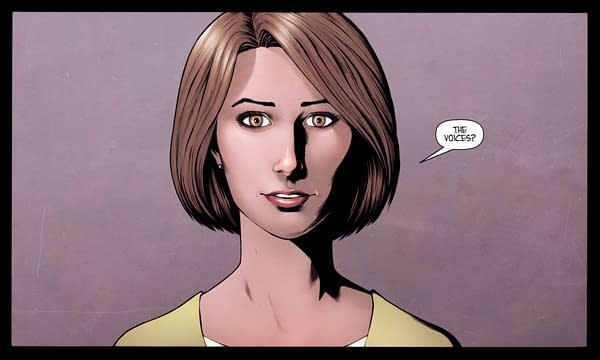
Your comic The Eighth Seal on Thrillbent is getting a ton of press, and rightfully so. Did the pseudo-cinematic style change the way you wrote the story?
The format we're doing on Thrillbent is different from what people think of when they hear motion comic. They think of what was going on a few years ago where you get these YouTube videos or DVDs of reanimated comics that take everything out of the hands of the reader. It's not a comic book, it's animation at that point. We wanted to use techniques that you can't use in print that add to the story, but keep the pace of reading in the hands of the reader. That's the one thing that's distinct about comics compared to all other artforms, you have control of how you're reading through. You can focus on a panel, study every detail and then move onto the next one. It's not forcing you through the comic.
In the Digital First panel you talked about Thrillbent's method of presenting comics having specific advantages over print that you wanted to utilize, something I hadn't even considered. Would you mind repeating that point?
Sure! The reason I approached Mark Waid to do a story with Thrillbent is that I realized it would be a really effective tool for horror. In print comics there's only one opportunity for a scare every two pages, the page turn. With this, it takes that and puts that tension on literally every page swipe. You have to idea what's going to change and be different. Like in a horror movie when all of a sudden it goes dead silent and you're not sure if something's going to pop out at you. Not even pop out in a scary way, just the building of tension in doing horror that way. It seemed like an incredibly powerful opportunity.
Do you think this tension would work well for other genres?
Absolutely. The fact that you can play with tension in a whole new way lends itself to anything. It lends itself to humor or action. They did a few comics in this format for Marvel Infinite and my favorite was was the Nova comic by Mark Waid that tied into AvX last year. It showed that you could do speed in a really interesting way because you can change perspective, you can see someone moving through different layers. The unveiling aspect where you start real small in the corner and build out to show the perspective of what's happening on the screen. You can do those reveals in dramatically different ways that you can't do in print.
Unlike print or even motion comics, this method of storytelling is still relatively new. There are countless books for people who want to learn how to write comics, but I'm assuming there aren't any for what you're doing. Have you run into any problems in writing or creating The Eighth Seal?
We're creating a new language for how to describe the things we're doing. The term we keep using is 'on the swipe,' like we'll say "this will change in panel two and then on the swipe go to panel three." You sort of have to build the flow into the script to see how it's going to play out. It's all brand new. The benefit is that I'm so new to writing comics that I'm just figuring out how to write print comics so it's not like I'm stuck in one mode. Jeremy Rock is the artist on the book, he also did Luthor right at the launch of Thrillbent. It sort of showed off the potentials of how to do comics in this form. He's the best partner in the world for this and he draws really scary stuff.
Do you think the Thrillbent model, free on the web then later for purchase, is helpful to getting new readers? Do you think this is going to effect digital or print comics as a whole?
James Tynion: Part of it is that it's an experiment right now. We're still figuring out what works and what doesn't. With Mark's series Insufferable he's doing a totally different method. First he is putting it all free online and then he's putting collections together and putting them on the website. What I wanted to do with The Eighth Seal is try something totally new. The first issues out on comixology and Thrillbent for pay and free, but for the second chapter we're going to release the pay version two weeks before the free version goes up on the website. We also have bonus material and production sketches and all of that built into the pay versions. There is a bit of an incentive to buy. If you want it a little faster, you can buy it and if you want to wait and get it free, by all means. The biggest thing we wanted is for people to be checking it out and getting the exposure that we think the story deserves.
The landscape format is also a significant difference from print comics. I hesitate to even call them panels, but there are far fewer panels or swipes on each page. It makes sense because it's a smaller space, but how does that affect the writing?
It changes the pacing. A standard page on a Thrillbent comic is only one to three panels where I'm used to having five or even in some cases six or seven. That was a bit of a learning curve that my artist thankfully helped with. I was writing it with so many panels on each screen and Jeremy reconfigured it and made it much better. Now I'm realizing what it looks like when he formats it so I can write towards it.
Shifting over to The Eighth Seal specifically, I don't think we know what The Eighth Seal even is. Was that information in the first issue or are you going to be pushing that later on?
That's one of the core mysteries of the series and we're going to see hints at what it means and what connections it has to the conspiracy at the heart of the book and to the monster. There's definitely a meaning, but it's not something that's going to be apparent for a while.
It seems like with like the First Lady would be noticed Why did you choose the First Lady as the monster?
Well it's high profile and it ups the tension. It means people will notice when something goes terribly wrong. The fact that she thinks she's going insane, it would be horrifying if it was just a regular ordinary person, but the added tension and potential danger of this happening on such a powerful scale or a conspiracy happening at that large of a scale.
So are you using this as a soap box?
It's not so much a soap box. I wanted to focus mostly on the horror. I think you'll find some of my political views seeping in around the edges here and there, but not in terms of "okay I need to talk political for a bit." The heart of the book is the characters. It's meant to be a character piece and I think horror needs to be driven by character.
Can you say whether or not this is an ailment that the First Lady has been having her whole life or is it something that has recently happened to her?
It's come about in the recent past. It's not something she's been experiencing her entire life. She believes it has come with the stress of being the first lady.
—
After the interview James and I talked briefly about his upcoming DC work, but because I was not cleared by the DC press team I was forbidden to record the conversation. Still, James assured me that his love of the Bat-Family is clearly on display in his newly appointed position on Red Hood and the Outlaws. We traded some Batman theories before he and his wife returned to the convention floor to talk to more fans.
The interview left me hopeful for the burgeoning field of digital comics. In only the past year, Mark Waid and company have established an almost entirely new medium. I expect we will see many more startups emerge into this field as well as participation from the industries big companies, but one thing that Tynion left with me is the assurance that these comics are completely different from print. It is true that these motion comics draw direct influence from the paperback issues we've seen for decades, but even if the mediums are 99% similar, there is still that 1% making a distinct difference. In my opinion, Thrillbent comfortably falls somewhere in between the motion of film and the static of comics with each title, issue, panel or "swipe" fluctuating in its reliance on mobility. However, no matter how far Thrillbent leans on the movement of film, the familiar relationship I have always felt with a comic remains. The reader is still in control and I hope that's something that never changes.



